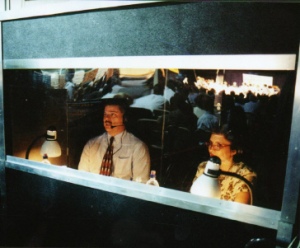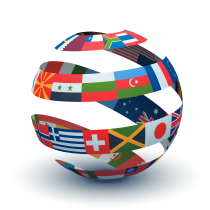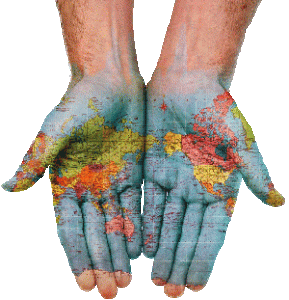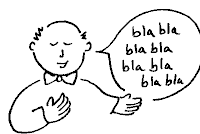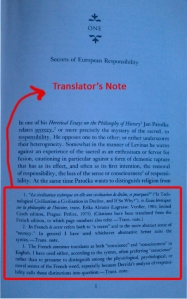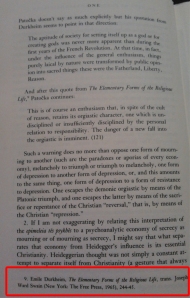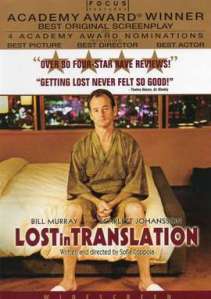
Today’s post is for all the men and women out there who have crossed paths with a freelance translator…and have decided to live with him or her. Husbands, wives, boyfriends, girlfriends, civil union partners—I am talking to you. This guide will help you understand the lifestyle and needs of your significant other.
First of all, let me remind you that I’m referring to freelance translators—not in-house ones. Self-employed translators are an entirely different breed, always on the prowl, ready to pounce on any possible lead. (We’ll get back to this later.)
Lifestyle
When you head out for work, the translator is sitting at the desk, staring at the computer. When you get back from work, the translator is sitting at the desk, staring at the computer.
While you’ve been going from meeting to business lunch to getting work done, time has stood still for the freelance translator.
No, this is not true. As a matter of fact, the freelance translator has a remarkable ability to hold the same posture for hours on end.
Look at his or her work area—the keyboard and mouse are designed for good ergonomics. The large monitor is set up to prevent eye fatigue. The armchair keeps the translator’s back straight. The computer is powerful and has endless features. The freelance translator has done everything to make work as comfortable as possible.
What does your freelance translator actually do all day?
Once you are out the door, your sweetheart executes the task which sets the workday in motion: make tea/coffee. (Check the appropriate box.) Next, the translator sits down, hot drink within arm’s reach, and proceeds to read e-mail, RSS subscriptions, favourite newspapers, the Facebook timeline, and so forth. As paradoxical as it sounds, the work-at-home freelance translator is often very informed about the happenings of the outside world.
But do not make the mistake of thinking that just because the freelance translator can tell you what goes on hour-by-hour at Davos or about the debate on new finance-related legislation, your better half has accomplished nothing.
Au contraire. The translator is an advanced multitasker who can listen to music, catch up on tweets, negotiate contracts, make progress on the current assignment, all while sipping on a caffeinated hot drink. All from doing that day-in and day-out!
Are translators workaholics? Fortunately, no. The translator also has hobbies and a social life.
Leisure time
If you can only remember one characteristic of the freelance translator species, take this: this individual is hungry for culture. What would be more unsurprising for a person who spends all day doing work-related research? The translator often remains, even outside of working hours, a veritable geek.
Whether we’re talking about volleyball, oriental dance, backgammon, or scrapbooking, the translator has done all the necessary research on the chosen activity. The amateur chef can tell you when the first Kenwood mixer came out. The hard-core skier can list names of world champions from the past five years. And don’t get me started on the film buff!
The worst of it all: the freelance translator talks as if all these facts were common knowledge. “You did know that mascara come from antimony-based powder, didn’t you?” says the freelance translator who likes cosmetics, ready to talk history to the ladies at Sephora.
Social life
Fortunately, the translator has a social life. Correction: two of them. First comes friends and famiy. Friends who go way back are surely aware of the translator’s odd behaviour and they already know of his or her ability, at a family Sunday lunch in January, to explain the history behind the galette des rois. Or this need to translate a little during the holidays while everyone else is taking a nap…
As for newer acquaintances, the translator is often all ears. Yes, the freelance translator is extremely curious about others and is especially interested upon meeting someone in a technical profession. Different terminology! (I told you, the translator is a geek.) Sometimes the translator will go so far as to leave a business card. You never know…
Sometimes, the translator cannot help but share his or her knowledge. If you’re about to spend a relaxing evening with friends, don’t take out your Trivial Pursuit! After the linguist makes five straight wins, no one wants to play with him or her again.
The freelance translator’s true self really comes out when meeting individuals of the same breed. You are probably wondering why your partner happily spends Saturday morning (Saturday morning!) to attend a talk about translation, Moldavian verb tenses or tax laws for the self-employed. Let me assure you: the translator is not insane.
While you have spent the whole week with co-workers—who you would not dream of running into on the weekend—the translator has not seen a living soul. Sure, he or she talked online all week. But you’ve got to understand that the translator needs to see others who share the same lifestyle, to talk about subjects all translators are interested in (who said only translators liked that stuff?). It’s like going to Disneyland! The most awesome part is seeing how the translator lights up to explain the importance of the latest grammar rule reform or to get you to see a Czech film subtitled in German.
![]() When I was in primary school, I used to try come up with my own kind of language so that my mom could not read it at all. I tried to shorten the words but I just could not memorize my own abbreviations and I gave up. Today, internet slang offers the kind of language that I always wanted! There is also a dictionary- you do not lose track of what’s going on. Or, while you’re chatting on Facebook or MSN with a native speaker, you do not have to say “Sorry, I do not understand what you say”. Here is an online internet slang dictionary. It works quite well, at least for a non-native speaker like me
When I was in primary school, I used to try come up with my own kind of language so that my mom could not read it at all. I tried to shorten the words but I just could not memorize my own abbreviations and I gave up. Today, internet slang offers the kind of language that I always wanted! There is also a dictionary- you do not lose track of what’s going on. Or, while you’re chatting on Facebook or MSN with a native speaker, you do not have to say “Sorry, I do not understand what you say”. Here is an online internet slang dictionary. It works quite well, at least for a non-native speaker like me ![]()
![]()








